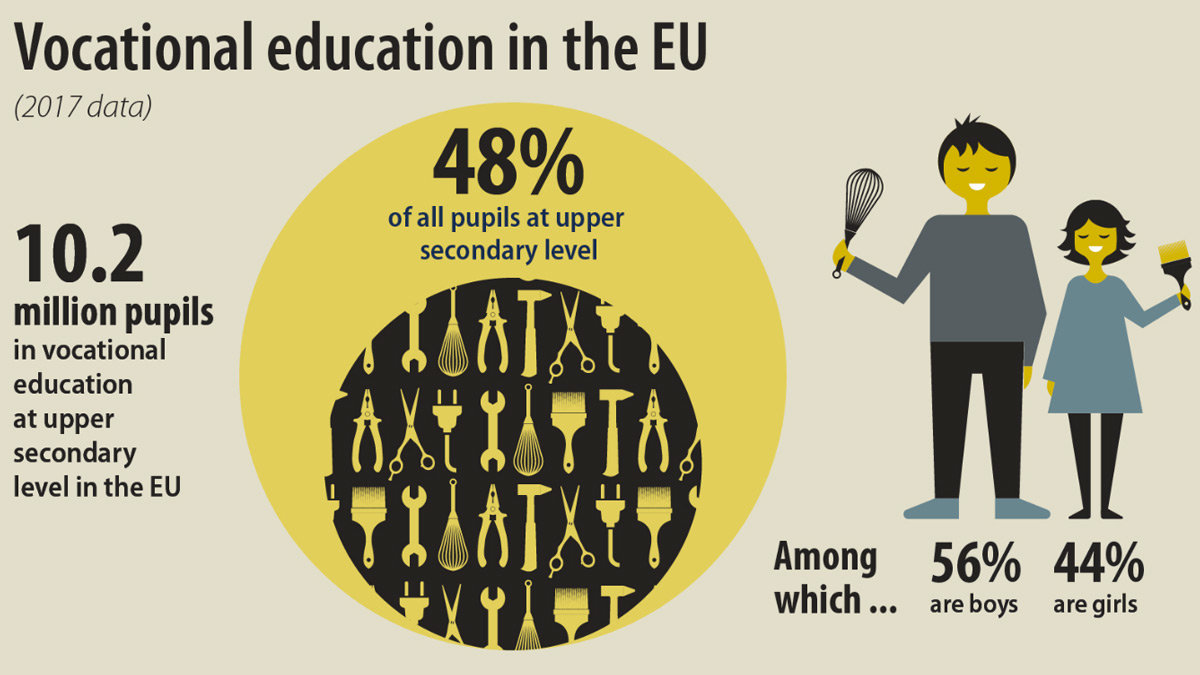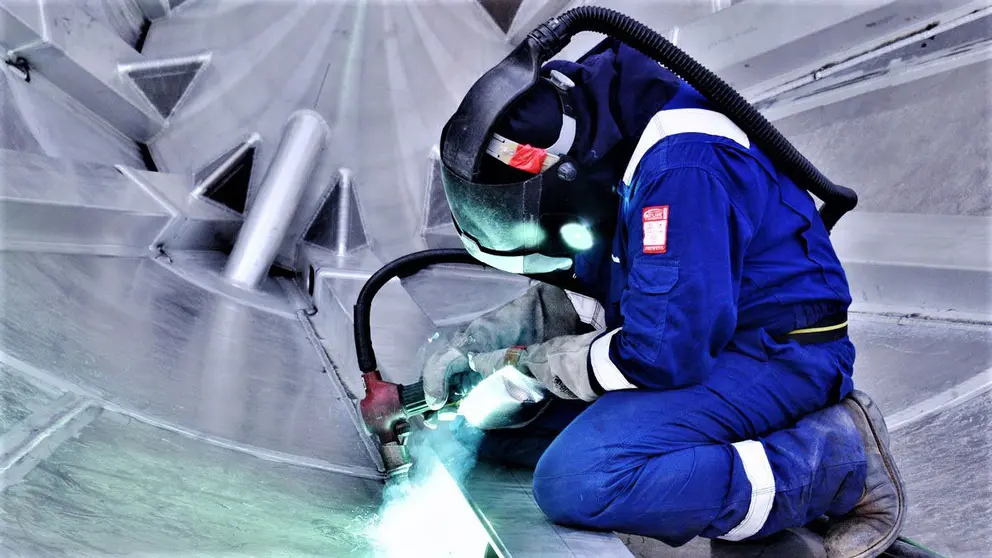From October 14 to 18, the European Union (EU) celebrates the European Vocational Skills week.
In 2017, 21.4 million pupils were studying at upper secondary level in the EU, out of which more than 10.2 million (or 48%) were enrolled in vocational education, according to the statistical office of the EU (Eurostat).
Students usually enter upper secondary school programmes (ISCED level 3) between the ages of 14 and 16. These programmes are typically designed to complete secondary education in preparation for tertiary education or provide skills relevant to employment, or both.
 Source: Eurostat.
Source: Eurostat.
Highest share in Czechia and Finland
In thirteen EU Member States, more than half of all upper secondary pupils studied vocational programmes in 2017.
Czechia and Finland registered the highest proportion of pupils at upper secondary level enrolled in vocational education (both 72%), ahead of Slovenia (71%), Croatia (70%), Austria and Slovakia (both 69%), and the Netherlands (68%).
At the opposite end of the scale, shares of less than a third were recorded in Ireland (10%), Cyprus (17%), Hungary (23%), Lithuania and Malta (both 27%), and Greece (29%).

More males than females
Vocational education at upper secondary level was somewhat dominated by males, who accounted for 56% of pupils studying this type of programme.
The majority of pupils following vocational upper secondary programmes were male in every EU Member State, except the United Kingdom (52% were women), Belgium and Sweden (both 51%), and Finland (little over 50%).
In contrast, fewer than 40% of pupils following vocational programmes at upper secondary level were female in Cyprus (23%), Ireland (33%), Greece (34%), Lithuania (35%), Germany (37%), Italy (38%), Hungary and Poland (both 39%).
Work-based components
According to Eurostat, vocational education programmes are designed to provide learners with the knowledge and the set of skills specific to a particular occupation or trade. Such programmes may have work-based components, for example apprenticeships or dual-system education programmes.
Successful completion of such programmes leads to labour market-relevant, vocational qualifications acknowledged as occupationally oriented by the relevant national authorities and/or the labour market.











